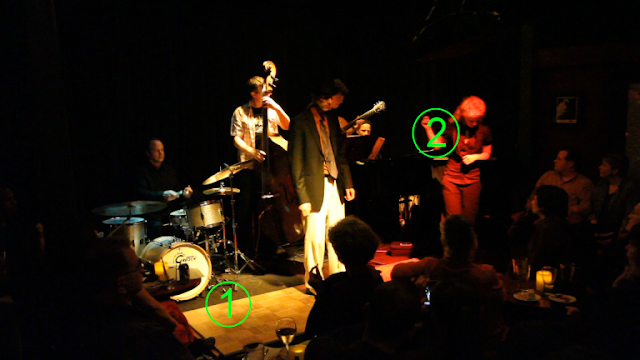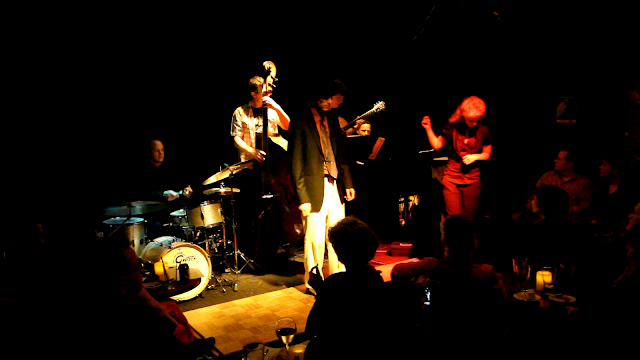I recently explored several non-linear video editing applications. I evaluated each of the applications.
All of my research was performed on a Core I7 930 (2.8GHZ) with 12 GB of ram running Windows 7 x64. The PC runs 3 monitors powered by dual ATI Radeon 4850's.
This will be the first part in a series of posts following the comparison.
Below is a video demonstrating seeking performance of Canon 7D videos on
Monday, January 31, 2011
Sunday, January 30, 2011
Pocket Wizards VS Radio Poppers
The following shows a comparison of Pocket Wizards http://www.pocketwizard.com/ vs Radio Poppers http://www.radiopopper.com/ .
I am going to compare the two systems with the following configuration
I am going to compare the two systems with the following configuration
- 1 Canon 7D
- 1 430 EX
- 1 580 EX II
The comparison will be with both flashes off camera.
* Note: You need to modify the Nikon adapter to fit the 7D and not make the camera think a Flash is attached.
Pocket Wizard | Radio Popper | |
What to buy | 3 Flex TT5 units 1 AC3 ZoneController 2 AC5 RF Soft Shields | 1 PX Transmitter 2 PX Receivers 1 Nikon Hot Shoe Pop-up Flash Adapter |
Price | $766.95 + taxes and shipping => $854.61 | |
Interference with Flash | Yes. See http://www.pocketwizard.com/products/other_gear/rf_shields/ Potential interference with both Flashes. | Nothing known. |
Operate by in-camera menu | No. The AC3 Zone Controller provides functionality | Yes |
Supports ETTL | Yes | Yes |
Supports ratios | Yes – with the AC3 Zone Controller. | In camera menus |
# of channels | 3 (ABC) | 3 (ABC) |
Supports manual operation | Yes | Yes |
Range supported in manual | 1 to 1/64th power in 1/3 stops | 1 to 1/128th power in 1/3 stops |
Support mix of manual and ETTL | Yes | No |
Supports HighSpeed Sync | Yes | Requires 580 EX II on camera or ST-E2 Speedlite |
Supports Multi-Strobe | ??? | Requires 580 EX II on camera. |
* Note: You need to modify the Nikon adapter to fit the 7D and not make the camera think a Flash is attached.
Saturday, January 22, 2011
Lightroom 3, scrolling and tearing
I have noticed this issue with Lightroom 3 for quite some time and its quite painful bug. The following video demonstrates the problem.
I have reinstalled my PC, using the latest video drivers and even tried to simulate a solid state disk for the hard drive (via a RAM Disk). While the RAM disk helped the tearing problem was still there. Wish I had a fix for this. It makes scrolling through my pictures quite painful.
Friday, January 21, 2011
Pinnacle Studio 14 and the Canon 7D
I have owned both Pinnacle Studio 14, and the Canon 7D for almost a year. Several months ago, I was creating videos from time lapse captures I made with a webcam. The captures were only 640x480. During the creation of these time lapse videos (http://www.youtube.com/watch?v=EO-dvDwjL-I), I began to notice a problem with Pinnacle.
Standard Defintion
My video source was progressive (non-interlaced) content. The output video I was getting from Pinnacle was horribly pixelated. The title had jagged edges to it and the video quality was horrible. After contacting tech-support and trying out all sorts of options with the options dialogs
I learned that in order to get smooth output, I needed to make sure that the codec for background rendering was set to DV. My output was smooth again.
High Definition
Time passes and I think all is well. Just recently I notice the same sort of jagged interlacing artifacts in some of my high-definition videos. I try to perform the same settings as shown above for my high definition content, though I have the video set to "Set from first clip added to project". I notice that no matter what I do, I can never get the background rendering codec to use DV. the "Current" codec is always set to MPEG-2.
I then analyze all my projects that I created, and the video output I produced. I noticed 2 things.
In attempting to generate the sample pictures for this blog, I ran in to some interesting problems and difficulties reproducing the bug. I had to turn off background rendering to get the AVI's to successful export and was not able to get one of them to work reproduce. There still seems to be a element of randomness to whether Pinnacle will produce blocky interlaced/jaggy output or not.
Conclusion
I am still experiencing flakiness in reproducing this bug. Too much really seems to depend on those project settings and how they are set up. If you look at them wrong, you may or may not get output with interlaced/jagged/pixelated results. You could open a project one day and it works, and the next time you open it to output its back.
I have decided to seek out better more reliable software. It is quite unfortunate as I really liked the easy of use, and the included transitions/titling effects of Pinnacle's product. The software also had a good set of predefined output formats to choose from that was straight forward.
Comments
If you have Pinnacle Studio 14, and you use it to create videos, please check your footage for these unfortunate artifacts. If you see them as well, please leave comments below.
Sample Pictures
Standard Defintion
My video source was progressive (non-interlaced) content. The output video I was getting from Pinnacle was horribly pixelated. The title had jagged edges to it and the video quality was horrible. After contacting tech-support and trying out all sorts of options with the options dialogs
I learned that in order to get smooth output, I needed to make sure that the codec for background rendering was set to DV. My output was smooth again.
High Definition
Time passes and I think all is well. Just recently I notice the same sort of jagged interlacing artifacts in some of my high-definition videos. I try to perform the same settings as shown above for my high definition content, though I have the video set to "Set from first clip added to project". I notice that no matter what I do, I can never get the background rendering codec to use DV. the "Current" codec is always set to MPEG-2.
I then analyze all my projects that I created, and the video output I produced. I noticed 2 things.
- When I import a Canon 7D video, shot at 1920x1080x30p and I have the Project Format set to "Set from first clip added to project" that the Current format that is shown is 1920x1080x60i (1920 x 1080, 29.97 frames/sec 16:9, interlaced). Pinnacle Studio sees my progressive content as interlaced. I have imported the files into other packages (Sony Vegas, EDIUS and a few others) and all they show the video as being progressive. The camera is supposed to record in progressive.
- If I set the format as follows

the title sequence is no longer appearing interlaced, pixelated and is nice and smooth.
I performed all my analysis using uncompressed AVI output to ensure that the output format and compression was not affecting my analysis.
I examine what I thought was the fixed video, but then a little bit after the title sequence was gone, especially where diagonal lines run, that the jagged pixelated look is still there. Examining the footage I realized the interlaced/pixelated/jagged part was only fixed for the portion of the clip that was re-rendered with the title.
Realizing, that re-rendering the video is what removes the interlaced/jagged artifacts, I then added a the RGB colorizer filter (changing no settings) to all the clips. This removed the interlaced artifacts from the video. Unfortunately this change significantly increases the processing time required to work with the video. I also noticed some sections, particularly in the dark areas still look pixelated. I have found no good solution for this.
In attempting to generate the sample pictures for this blog, I ran in to some interesting problems and difficulties reproducing the bug. I had to turn off background rendering to get the AVI's to successful export and was not able to get one of them to work reproduce. There still seems to be a element of randomness to whether Pinnacle will produce blocky interlaced/jaggy output or not.
Conclusion
I am still experiencing flakiness in reproducing this bug. Too much really seems to depend on those project settings and how they are set up. If you look at them wrong, you may or may not get output with interlaced/jagged/pixelated results. You could open a project one day and it works, and the next time you open it to output its back.
I have decided to seek out better more reliable software. It is quite unfortunate as I really liked the easy of use, and the included transitions/titling effects of Pinnacle's product. The software also had a good set of predefined output formats to choose from that was straight forward.
Comments
If you have Pinnacle Studio 14, and you use it to create videos, please check your footage for these unfortunate artifacts. If you see them as well, please leave comments below.
Sample Pictures
I have two sets of sample pictures. The first set is with the title, the second set is without. To really see the problems you need to view the full size. Click on an image to view its full size.
First Frame - Legend
First Frame - Source
First Frame - With pixelated/interlaced/jagged edges for title and scene.

First Frame - Fixed
Second Frame Legend

Second Frame Source
Second Frame Interlaced/Pixelated/Jagged
Second Frame Fixed (only partial, take note of region 2 from the legend).

First Frame - Legend
First Frame - Source
First Frame - With pixelated/interlaced/jagged edges for title and scene.

First Frame - Fixed
Second Frame Legend

Second Frame Source
Second Frame Interlaced/Pixelated/Jagged
Second Frame Fixed (only partial, take note of region 2 from the legend).

Subscribe to:
Posts (Atom)






